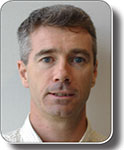Exploration success on the North West Shelf via continuous application of seismic technologies
Mark Thompson A , M Royd Bussell A , Michael Wilkins A , Dave Tapley A and Jenny Auckland AWooodside Energy
The APPEA Journal 49(1) 205-220 https://doi.org/10.1071/AJ08013
Published: 2009
Abstract
Expansion of the North West Shelf Venture (NWSV) production infrastructure is driving plans for sequential development of the small satellite fields. The desire for additional gas reserves has fuelled increased exploration and appraisal drilling in recent years with encouraging results.
The NWSV area is a complex geologic environment with multiple play levels, petroleum systems and trapping styles. Seismic imaging is poor in many areas, primarily due to multiple contamination. In 2004, the NWSV acquired the leading edge, regional Demeter 3D Seismic Survey. Since then, continuous application of improved processing techniques, such as 3D Surface-related Multiple Elimination (SRME) and Pre-Stack Depth Migration (PreSDM), have been key to providing significant imaging enhancements. Exploration drilling based on Demeter data resulted in three significant new gas discoveries.
Pemberton–1 (2006) explored Triassic sub-cropping sands in a horst block at the southwestern end of the Rankin Trend. The well encountered an upside gas column due to the presence of intra-Mungaroo Formation shales providing a base-seal trapping geometry.
Lady Nora–1 (2007) tested the fault block west of the Pemberton horst and encountered a 102 m gross gas column with gas on rock. The upside result accelerated a near term appraisal opportunity at Lady Nora–2 (2008).
Persephone–1 (2006) drilled a down-thrown Legendre Formation dip closure in the Eaglehawk graben. Success relied on the sealing potential of the North Rankin Field bounding fault. In spite of pressure depletion associated with over 20 years of production, Persephone–1 encountered a 151 m gross gas column at virgin pressures and a different gas-water contact to North Rankin. The result demonstrated active and significant fault seal along the major North Rankin Field bounding fault.
These recent, successful exploration wells have resulted in identification of follow-up drilling opportunities and a drive for ongoing seismic imaging improvements. The discoveries have material impacts on NWSV development plans for the Greater Western Flank and in the vicinity of the Perseus, North Rankin and Goodwyn gas fields.

Mark Thompson graduated from Curtin University in 1987 with a BAppSc in geology. He started his career in 1987 as a junior geologist for Doral Resources exploring the onshore Perth and Carnarvon basins. In 1992 Mark joined Woodside Energy where over a 17 year period he has been privileged to work in many of the world’s significant hydrocarbon provinces, North West Shelf Australia, Southern North Sea, Gulf of Mexico, West and North Africa. Mark is the exploration team leader for the Dampier and Exmouth sub-basins. Member: PESA and AAPG. mark.thompson@woodside.com.au |

Royd Bussell has a PhD in geology and more than 20 years experience in the oil industry. Royd worked with Shell Todd Oil Services in New Zealand for six years as exploration geologist and seismic interpreter, then four years as a production seismologist with NAM (Shell/ Esso) in The Netherlands. Royd joined Woodside Energy in 1998 as a senior geophysicist and has worked many of Australia’s offshore basins. He was exploration manager for the North West Shelf Venture during 2003–2008, when the Demeter 3D was acquired and, subsequently, several successful exploration wells discussed in this paper were drilled. Royd manages Woodside’s exploration efforts in the Browse and Otway basins. royd.bussell@woodside.com.au |

Michael Wilkins received his BSc (Hons) in geophysics from Curtin University in 2000. He subsequently joined Woodside Energy Ltd in 2001 as a graduate geophysicist working in both exploration and development assets. Michael has more than eight years experience at Woodside, mainly working as a quantitative interpretation specialist focussing mainly on Australian exploration opportunities michael.wilkins@woodside.com.au |

Dave Tapley graduated from Flinders University of South Australia in 1984 with a BSc (Hons) in geology and geophysics. He was employed by Esso Australia and Exxon from 1985–2000 in Australia, Malaysia, and Texas, working on a variety of exploration and development geoscience projects. In 2000 he joined Woodside Energy Ltd in Perth as an exploration geophysicist. He now holds the position of head of evaluation, responsible for the geoscience technical assurance of Woodside’s Exploration portfolio. Member: PESA. david.tapley@woodside.com.au |

Jenny Auckland is an exploration geoscientist with Woodside in Perth. She has 20 years experience as a geologist in the petroleum industry, having worked on the North Sea, Indonesia, Gulf of Mexico, North Africa and Australia. Jenny has an honours degree in geology from the University of Bristol and a Masters degree in engineering geology from the University of Durham. jenny.auckland@woodside.com.au |


